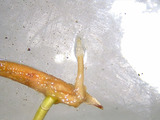
Nassella seeds germinated in water.Image credit: Fernando Agudelo-Silva
- Subject:
- Agriculture
- Biology
- Botany
- Forestry and Agriculture
- Material Type:
- Diagram/Illustration
- Author:
- Emily Fox
- Date Added:
- 08/22/2022

Nassella seeds germinated in water.Image credit: Fernando Agudelo-Silva

In this lesson, the students will build a shelter in order to protect themselves from the rain. After the shelters are built, the class will perform durability and water proof testing on the shelters.
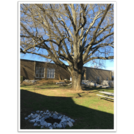
Students will explore the garden environment for examples of organisms having their needs met and will be given an event that might cause that organism to thrive, move or perish.

The nitrogen cycle game helps you learn how nitrogen atoms move through various forms including soil, the atmosphere, plants and animals. Actions such as lightening, bacteria digestion, plant assimilation, plant death, animal death, herbivorism and nitrogen fixing plant bacteria move nitrogen from one form to another.
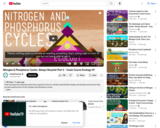
Hank describes the desperate need many organisms have for nutrients (specifically nitrogen and phosphorus) and how they go about getting them via the nitrogen and phosphorus cycles.
Chapters:
Nitrogen Cycle
Nitrogen Fixing Bacteria
Nitrifying Bacteria
Denitrifying Bacteria
Phosphorous Cycle
Lithosphere
Plants
Animals
Decomposers
Aquatic & Marine Ecosystems
Sedimentation & Weathering
Synthetic Fertilizers
Review
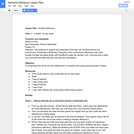
Objective:
To understand the three common deficiencies of nutrients that cause stunted growth in plants

"Opening the World through Journaling: Integrating Art, Science, and Language Arts" teaches children to become keen observers of the natural world by drawing and writing about the plants and animals in situ. In a set of nested exercises, students use games to gain confidence in drawing and writing as a way to gather information. Later, they employ these skills to put together a field guide, make treasure maps, and to write short stories and poems.

Students will observe, measure, sort, and examine (shapes and textures)of leaves individually, in groups, and in relationship to the entire plant.

The purpose of this Performance task is to provide students with an opportunity to problem solve based on a real-world situation (Claims 2 & 4). Due to the nature of the task, there are a variety of mathematical approaches students can take to successfully complete the task, however the mathematical approach presented in Act Three of the task addresses CCSS Domain of Operation and Algebraic Thinking. With this approach, students are shown different strategies for using multiplication to find the solution. Includes slides to support the implementation of “The Winner Is…Native Plants (3-5)” Math Performance Task with charts, images, etc.

In this activity, learners explore the question "What is paper?" Learners discover the processes and materials required to make paper while experimenting with different recycled fibers and tools.
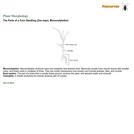
This illustrated guide to a corn seedling (Zea mays, Monocotyledon) is designed to help students recognize and learn the plant's individual parts. Along with an explanation of monocotyledon embryos, it includes a short description of the root system and coleoptile.

This illustrated guide is designed to help students recognize and learn the different parts of a flower. The single Web page can be easily printed for use at field sites.
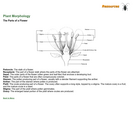
This illustrated guide is designed to help students recognize and learn the different parts of a flower. The single Web page, which can be easily printed for use at field sites, identifies these parts: plant stigma style ovary stamen anther filament petal ovule with embryo sac sepal receptacle peduncle.

PARTS OF A PLANTLesson overviewName of student teacher: Kely Forero Cano, Shirley Cabrera Cometa, Sheila Vanesa Montilla Mosquera, Sharon Ivonne Uriza Cachaya.School / Institution: Institución Educativa Olivero Lara Borrero Date: May 16, 2019. Clase / Grado: Fourth Grade Time and length of class: 2 hoursAchievement: The topic ‘’Parts of a plant’’ will be taught in real context while Ss are interacting at the same time. Students will be able to identify plant parts and named them in a real-life situation.
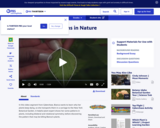
In this video segment from Cyberchase, a plant expert shows Bianca the patterns and symmetry found in nature.

The purpose of this resource is to observe the flowering and leaf stages of selected garden plants throughout the year. After a phenological garden is planted, students observe the growth of leaves and blooming of flowers on the plants. These plants were selected because each plant blooms at a different time in the year.
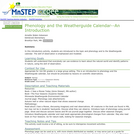
This classroom activity introduces the yearlong topic of phenology and how to use the Weatherguide calendar.

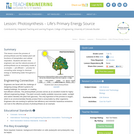
This lesson covers the process of photosynthesis and the related plant cell functions of transpiration and cellular respiration. Students will learn how engineers can use the natural process of photosynthesis as an exemplary model of a complex yet efficient process for converting solar energy to chemical energy or distributing water throughout a system.

Got oxygen? Got food? Well, then you've got to have photosynthesis! This video will break down photosynthesis into the "photo" part (capturing light energy and storing it) and the "synthesis" part (fixing carbon into carbohydrates). It's all a bit complicated, but take a deep breath and let's find out where that oxygen comes from.